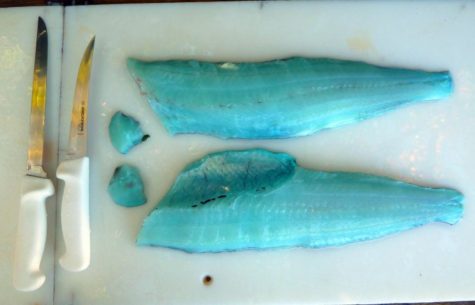Turquoise
Variations of the Color Blue
Blue is the only color which maintains its own character in all its tones…
~Raoul Dufy
Aqua: is the color of high ideals.
Azure blue: A color of true contentment, azure inspires determination and ambition to achieve great things, a sense of purpose in striving for goals.
Dark blue: This is the color of truth and moderation. Dark blue is the color of conservatism and responsibility. Although it appears to be cool, calm and collected, it is the color of the non-emotional worrier with repressed feelings, the pessimist and the hypocrite. Dark blue can be compassionate but has trouble showing it as its emotions run deep. Dark blue is a serious masculine color representing knowledge, power, and integrity, and is used quite often in the corporate world.
Indigo: is a great purifier of the bloodstream and also benefits mental problems. It is a freeing and purifying agent. Indigo combines the deep blue of devotion with a trace of stabilizing and objective red. Indigo is cool, electric, and astringent. Indigo links with and stimulates the brow chakra (third eye) and controls the pineal gland. It governs both physical and spiritual perception.It can be of great assistance in dealing with ailments of the eyes and ears.
Midnight blue: This color has a sedative effect that promotes meditation and intuition.
Navy blue: Navy blue can be associated with restrictive environments. It has much of the same effect as a dark blue.
Pale blue: Pale blue inspires creativity and the freedom to break free.
Sky blue: One of the calmest colors, sky blue inspires selfless love and fidelity. It is non-threatening and promotes a helpful nature that can overcome all obstacles. It is the universal healer.
Turquoise: is the symbol of youth, both the color and the gemstone. This color has a soothing affect. Turquoise is the color of communication. It contains the growth quality of green with the blue quality of communication. Turquoise has long been used in amulets to provide protection, health, confidence and strength. Increases intuition and sensitivity. Works disinfecting and antiseptic. Tones the general system. Builds the skin. Relaxes sensations of stress.
Note: This post was compiled by Shirley Twofeathers for Color Therapy, you may repost and share without karmic repercussions, but only if you give me credit and a link back to this website. Blessed be.
The Turquoise Gallery
Using Turquoise
Turquoise helps to open the lines of communication between the heart and the spoken word. It presents as a friendly and happy color enjoying life.
In color psychology, the color turquoise controls and heals the emotions creating emotional balance and stability. In the process it can appear to be on an emotional roller coaster, up and down, until it balances itself.A combination of blue and a small amount of yellow, turquoise fits in on the color scalebetween green and blue. It radiates the peace, calm and tranquility of blue and the balance and growth of green with the uplifting energy of yellow.
Turquoise recharges our spirits during times of mental stress and tiredness, alleviating feelings of loneliness. You only have to focus on the color turquoise, whether on a wall or clothing and you feel instant calm and gentle invigoration, ready to face the world again!
Turquoise is a great color to have around you, particularly in an emergency, as it helps with clear thinking and decision-making. It assists in the development of organizational and management skills. It influences rather than preaching and demanding.
The color turquoise is a good color to aid concentration and clarity of thought for public speakers as it calms the nervous system, gives control over speech and expression, and builds confidence. Print your speech notes on turquoise and every time you glance down you will feel the effects of the color.
Turquoise heightens levels of creativity and sensitivity. It is good at multi-tasking, becoming bored if forced to focus on one thing only. Sometimes its thinking can become scattered if surrounded by too much of this balancing color.
Turquoise encourages inner healing through its ability to enhance empathy and caring. It heightens our intuitive ability and opens the door to spiritual growth. It is the color of the evolved soul. Many meditations can begin with visualizing a pool of Turquoise water to gaze in or even to imagine diving into to receive messages from Dolphin and the Ocean Spirits.
Turquoise can also be self-centered, tuning in to its own needs above all others. At the same time, it can help us to build our self-esteem and to love ourselves, which in turn supports our ability to love others unconditionally. At its most extreme it can be boastful and narcissistic.
Although turquoise is self-sufficient, it fears being alone and can become aloof and unapproachable when this occurs, making the situation worse.
Turquoise has strong powers of observation and perception and can be quite discriminating. It has the ability to identify the way forward, the way to success, balancing the pros and cons, the right and wrong, of any situation. It is a good color to use when you are stuck in a rut and don’t know which way to move.
Turquoise can sometimes be impractical and idealistic and remote from emotional reactions, appearing excessively cool, calm and collected.
Positive and Negative Traits of Turquoise:
- Positive keywords include communication, clarity of thought, balance and harmony, idealism, calmness, creativity, compassion, healing and self-sufficiency.
- Negative keywords include boastfulness, secrecy, unreliability and reticence, fence-sitting, aloofness, deception and off-handedness.
Loving turquoise:
If this is your favorite color, you are friendly and approachable, easy to communicate with. You are compassionate, empathetic and caring. You have a heightened sense of creativity and sensitivity. You speak from the heart and love sharing your inner most thoughts.
Not loving turquoise:
A person who has an aversion to turquoise may be looking for solidity and security in society, especially in marriage. Also, may be reluctant to think originally or to walk new paths.
Wearing turquoise:
Tints of turquoise color have a sweet feminine feel. Darker shades of turquoise, such as teal have a more sophisticated feel. Variations of turquoise, are often used to represent water. This color is also is referred to as aqua and aquamarine. Wear turquoise jewelry to give yourself confidence and strength.
The Color Turquoise Represents
Communication:
Turquoise represents open communication from and between the heart and the spoken word. It relates to the electronic age and the world of computers, and communication on a large scale.
Emotional Control:
Being the mid color between the extremes of red and violet, turquoise is the color of balance, for the emotions, thoughts and speech.
Self-Sufficiency:
Turquoise has the ability to tune into its own needs and find the way to success.
Effects of the Color Turquoise
Clarity of Thought:
Turquoise enhances the ability to focus and concentrate, assisting with clear thinking and decision-making, and the development of good organizational skills.
Calming:
Turquoise is calming yet invigorating, restoring depleted energies.
Non-emotional:
A negative effect of turquoise is that it can cause people to be too aloof and to hide their emotional reactions.
Turquoise Gemstones and Minerals
Throughout the world turquoise stones have been used as protective amulets for promoting health and guarding against harm. In the ancient Persian Empire, the sky-blue gemstones were earlier worn round the neck or wrist as protection against unnatural death.
In ancient Egypt, grave furnishings with turquoise inlay were discovered, dating from approximately 3000 BC. In many cultures of the Old and New Worlds, turquoise has been esteemed for thousands of years as a holy stone, a bringer of good fortune or a talisman.
Turquoise stones do sometimes change color. The change can be caused by light, or by a chemical reaction brought about by cosmetics, dust or the acidity of the skin. If a turquoise stone changes color, the wearer was thought to have reason to fear the approach of doom.
Turquoise stones are thought to be supportive and protective. It is believed that they strengthen the subtle body, heal the spirit, have a soothing effect, increase contentment. This stone has a grounding effect. Use it during meditation and spiritual activity, to protect against accidents, and / or as a talisman of strength and protection for astral travel and spiritual journey. It is a powerful healing stone for emotional, mental and physical problems, hypersensitivity , mental calm, and general meditation.
Other stones in this color family:
Chrysocolla: Ease heartache, Earth healing, calming, inner strength. PMS ,menstrual discomfort, relieve allergies, treat ulcers, digestive problems, arthritis, lungs and thyroid, enhances the metabolism, psychic ability, prophetic dreaming, trance, increase the ability to love, improve home life and strengthen relationships.
Amazonite : Helps calm the emotions and soothes the nerves, helps the throat and heart chakra, solar plexus centers, healing. throat, thyroid, nerve and brain conditions, reduce self damaging behavior, addictions, posture, increases clarity and insight. peace and calm, aligns the physical and astral bodies, a general all purpose healing stone, may help with Motor Neuron disease and other similar progressive diseases, health maintenance, pinched nerves, spinal difficulties, for bursitis.
Aquamarine: Stimulates the intellect and stabilizes the emotions, helps connect with the higher self and Spirit, aligns chakras and the energetic system, for self understanding, compassion, understanding and tolerance, communication, glands ,throat ,teeth , and vision, throat chakra, stimulates healing, improves confidence, and the ability to stand fast, helps communication.
Note: This post was compiled by Shirley Twofeathers for Color Therapy, you may repost and share without karmic repercussions, but only if you give me credit and a link back to this website. Bright Blessings.
Why Doctors Wear Green or Blue Scrubs
Scrubs used to be white — the color of cleanliness. Then in the early 20th century, one influential doctor switched to green because he thought it would be easier on a surgeon’s eyes, according to an article in a 1998 issue of Today’s Surgical Nurse. Although it is hard to confirm whether green scrubs became popular for this reason, green may be especially well-suited to help doctors see better in the operating room because it is the opposite of red on the color wheel.
Green could help physicians see better for two reasons. First, looking at blue or green can refresh a doctor’s vision of red things, including the bloody innards of a patient during surgery. The brain interprets colors relative to each other. If a surgeon stares at something that’s red and pink, he becomes desensitized to it. The red signal in the brain actually fades, which could make it harder to see the nuances of the human body. Looking at something green from time to time can keep someone’s eyes more sensitive to variations in red, according to John Werner, a psychologist who studies vision at the University of California, Davis.
Second, such deep focus on red, red, red can lead to distracting green illusions on white surfaces. These funky green ghosts could appear if a doctor shifts his gaze from reddish body tissue to something white, like a surgical drape or an anesthesiologist’s alabaster outfit. A green illusion of the patient’s red insides may appear on the white background. (You can try out this “after effect” illusion yourself.) The distracting image would follow the surgeon’s gaze wherever he looks, similar to the floating spots we see after a camera flash.
The phenomenon occurs because white light contains all the colors of the rainbow, including both red and green. But the red pathway is still tired out, so the red versus green pathway in the brain signals “green.”
However, if a doctor looks at green or blue scrubs instead of white ones, these disturbing ghosts will blend right in and not become a distraction, according to Paola Bressan, who researches visual illusions at the University of Padova in Italy.
So, although doctors trot down the street these days in a rainbow of patterned and colored scrubs, green may be a doctor’s best bet.
Source: Live Science
New Age Turquoise
- Key words: Love, healing, generosity, emotion, feeling , the unconscious , intuition, individual responsibility .creativity , communication, self reliance , independence.
This color has more to do with feeling and creative expression than with rational thought. These colors between green and blue the shades of turquoise, blue green and or aqua relate to transformation, evolution, change, sharing, waves, metamorphosis, transmutation, the inner teacher, and the spiritual heart or Thymus Chakra, a transpersonal chakra on the hara line (deeper aura level ) about midway between the heart and the throat.
This is a chakra which connects us with energies of spiritual love and mystical communion and the Divine or God concept (however you name it ) as teacher and as Sacred Lover and beloved. These are shades that admit us to varied realms of the trans-dimensional, meaning existence beyond time and space.
While the most common elemental attribution of this color is to water it is also a color of air and spirit. Turquoise is associated with ancient civilizations, the New Age and also with the zodiac sign of Aquarius. The word aqua means water. These shades are strongly evocative of the ocean on a clear day especially that of the lovely warm tropical Island seas.
This family of colors is a color of mystics and telepathy a symbol of the heavens and of the sea, of fluid movement and mutability.
These colors are used in color meditations, in forming a connection for communication and general awareness and with dolphins, with angels and with elemental, other dimensional beings and for help journeying into other realms. A color that promotes higher emotional communication, Self awareness and initiative.
In accord with its assignment to Aquarius and the “new age” . Turquoise on a more mundane level, corresponds to the modern communication network satellites, telephones and the internet .
These colors are associated both with ancient and ethnic artistry and with the cutting edge modern techno artistry. From the mosaics of the ancient world, the aqua clay paint accents of Northwest Native American works to the rather kitchy “modern ” of the fifties, such as cone shaped plastic chairs , and lava lamps, these shades have been used in a startling range of ways.
In the Aura turquoise has not been common, it may be seen around Poets and Mystics, indicates a person with a seeking mind who is interested in almost everything, some may specialize in research of some kind, usually altruistic , to benefit humanity as a whole analytical, insightful, good counselors It may become more common as the “new millennium” progresses. It is transient in the aura when a person is thinking of ideas and ideals.
Foods That Are Turquoise
I found almost nothing in the way of foods that are naturally a turquoise color. This is what I did find:
Lingcods are sometimes found with amazing, edible blue flesh. A bile pigment called biliverdin seems to be the cause, but exactly how it gets into the flesh of the fish remains a mystery. Cooking destroys the color, but if you are wanting to eat a turquoise colored food, this seems like a possible choice.
There is also a chicken that lays blue or turquoise eggs. It’s called an Araucana. Here’s a picture of the eggs, and yes, they are real. When you crack them open, they look like any other egg.
Here’s a picture of the breed of chicken that lays these eggs:
Turquoise and Architecture
Turquoise is a stone and color that is strongly associated with the domes and interiors of large mosques in Iran, Central Asia and Russia. Turquoise is a blend of green and blue. It is so named because the Turks were fond of the color and decorated many of their buildings with turquoise ceramic glazed tiles.
Traditionally, the guiding formative motif of Iranian architecture has been its cosmic symbolism “by which man is brought into communication and participation with the powers of heaven”. This theme has not only given unity and continuity to the architecture of Persia, but has been a primary source of its emotional character as well.
Iran (previously known in the West as Persia) has remained an important source of turquoise for at least 2,000 years. It was initially named by Iranians “pirouzeh” meaning “victory”, and later the Arabs called it “firouzeh”. In Iranian architecture, the blue turquoise was used to cover the domes of palaces because its intense blue color was also a symbol of heaven on earth.
Here are some beautiful examples:
Healing With The Color Turquoise
In healing Turquoise can help to calm hyperactive or hypersensitive people . Turquoise calms the mind and is cooling to the nervous system. assists immunity and is one of the colors for throat chakra. It is a powerful cleanser and can be used as an all purpose higher octave color for healing. It can be used to improve the circulation and healing effect of energy in general.
Healing with the color turquoise:
- Turquoise is important for respiratory system and in strengthening the metabolism.
- It is cooling to the system, and can be beneficial in easing all feverish conditions and for balancing all systems of the body. It can also be used to cool and ease any inflammation.
- Combines both the beneficial effects of blue and green.
- It vitalizes all systems. It is also purifying.
- In treating febrile diseases, change to turquoise when the temperature is normal.
- Turquoise is useful in treating skin conditions, throat problems, and it is very effective for acute pain and earaches.
- Turquoise is a prime skin-building color and should be used after the pain from burns is relieved. Turquoise hastens the formation of new skin.
- It eases respiration problems. It is effective in treatment of asthma and bronchitis, especially with children. Regular color breathing with turquoise or aqua can prevent intense attacks of asthmatic conditions.
- Turquoise is good for immune system, skin (burns and infections), mental relaxation, acidic, tonifier, regulates lung/large intestine systems.
- Turquoise stimulates the Thymus center, or Higher Heart Chakra.
- Increases intuition and sensitivity.
- Turquoise is a cerebral depressant for over-active mental patients.
- It enhances the ability to focus and concentrate, assisting with clear thinking and decision-making, and the development of good organizational skills.
- Works as a disinfectant and antiseptic.
- Tones the general system.
- Relaxes sensations of stress.
- It is calming yet invigorating, restoring depleted energies.
- It resonates to the thymus and thyroid glands of our endocrine system.
- Turquoise has a strengthening influence on all systems of the body bringing a sense of inner confidence.
- Treats disillusionment and apathy
- Also good for communication issues, cleansing , breath issues, physical detox , rebirthing , purification , sterilization , transition , pain, and hearing.
Turquoise imbalance:
- Too much of this color in your life may give you an overactive mind and create emotional imbalance, making you either over-emotional or non-emotional.
- Too little turquoise in your life may cause you to withhold your emotions, resulting in secrecy and confusion about your direction in life.
Note: This post was compiled by Shirley Twofeathers for Color Therapy, you may repost and share without karmic repercussions, but only if you give me credit and a link back to this website. Bright Blessings.
The Color Turquoise
“She would be half a planet away, floating in a turquoise sea,
dancing by moonlight to flamenco guitar.”
― Janet Fitch, White Oleander
Turquoise is a blend of green and blue. It is so named because the Turks were fond of the color and decorated many of their buildings with turquoise ceramic glazed tiles.
Turquoise has the calming, expansive nature of green and the cool, quiet flow of blue. It can bring to mind a particular quality in the sky before or after sunset, a calm, warm sea, a beautiful lagoon, a pure mountain stream or distant hills in the mellow light of late summer
Turquoise is the color of the deep subconscious. Since the lungs vibrate in the green range, turquoise also belongs to the lungs, especially to the higher vibration of the lungs, which is spirituality, creativity, intuition, imagination, and the synchronistic quality of bring “in tune” with nature, with oneself, with “the flow.” The process of psychic opening is assisted with the color turquoise, as well as violet, and wearing turquoise around the neck is good for the voice, expression, creativity, since the root urge of creativity is to express.
This is a color that recharges our spirits during times of mental stress and tiredness, alleviating feelings of loneliness. You only have to focus on the color turquoise, whether on a wall or clothing and you feel instant calm and gentle invigoration, ready to face the world again!
It is a great color to have around you, particularly in an emergency, as it helps with clear thinking and decision-making. It assists in the development of organizational and management skills. It influences rather than preaching and demanding.
This is a good color to aid concentration and clarity of thought for public speakers as it calms the nervous system, gives control over speech and expression, and builds confidence. Print your speech notes on turquoise and every time you glance down you will feel the effects of the color.
It heightens levels of creativity and sensitivity; it is good at multi-tasking, becoming bored if forced to focus on one thing only. Sometimes thinking can become scattered if surrounded by too much of this balancing color.
Turquoise’s essence is clear, fresh, focused, youthful, imaginative, transformational, clean, sensitive, changing, rarefied, new, and victorious. Turquoise encourages inner healing through its ability to enhance empathy and caring. It heightens our intuitive ability and opens the door to spiritual growth. It is the color of the evolved soul. Turquoise encourages clarity in thoughts, feelings, and communication.
Note: This post was compiled by Shirley Twofeathers for Color Therapy, you may repost and share without karmic repercussions, but only if you give me credit and a link back to this website. Bright Blessings.




































